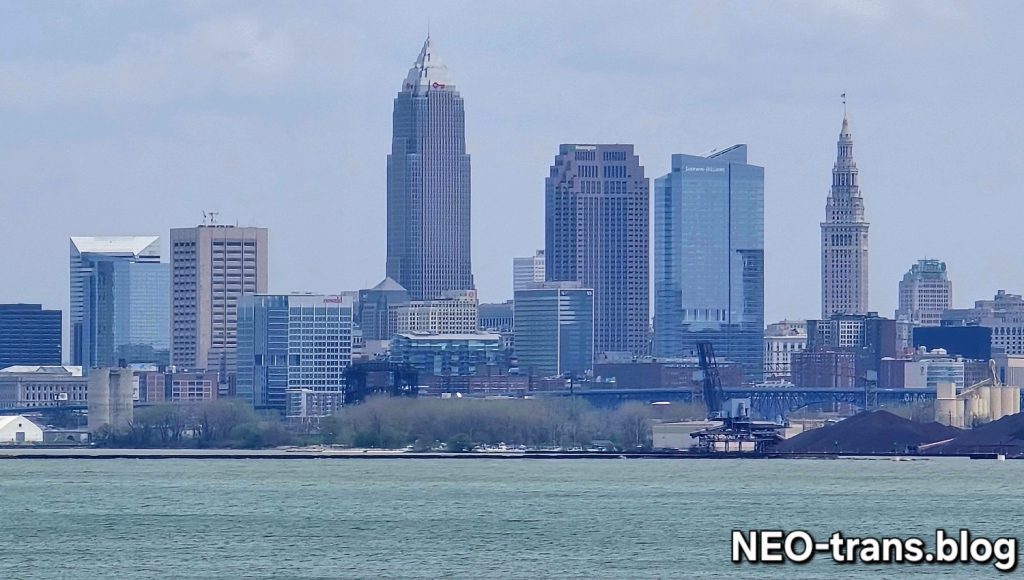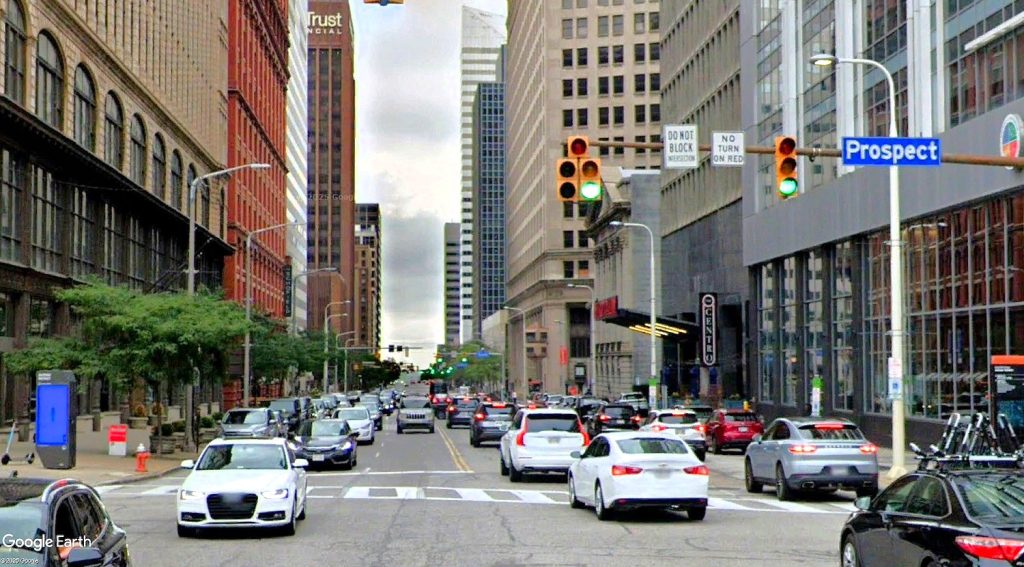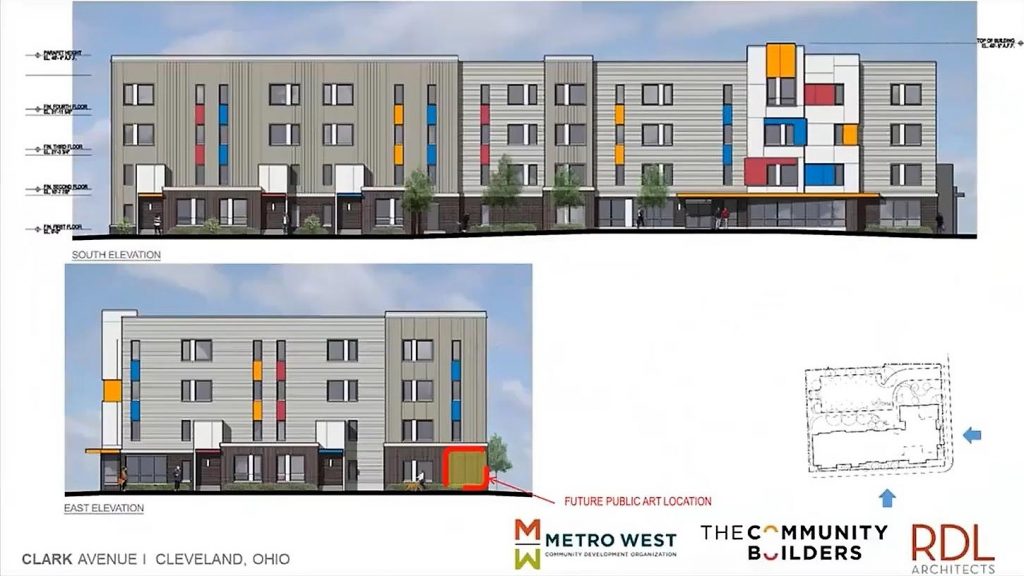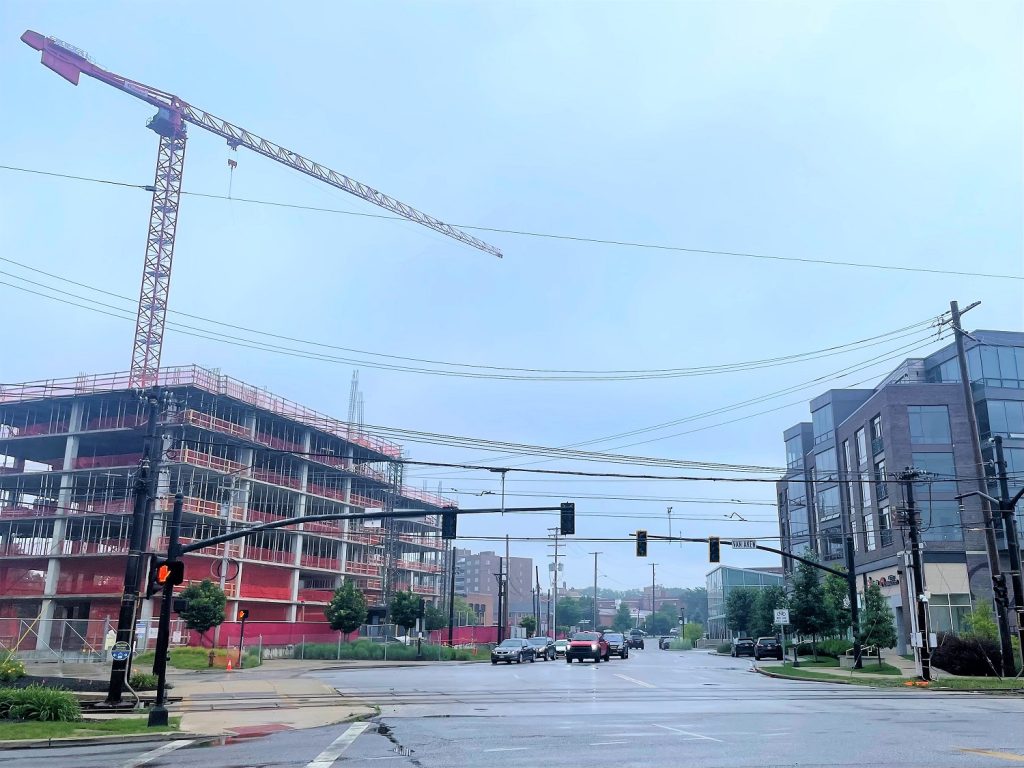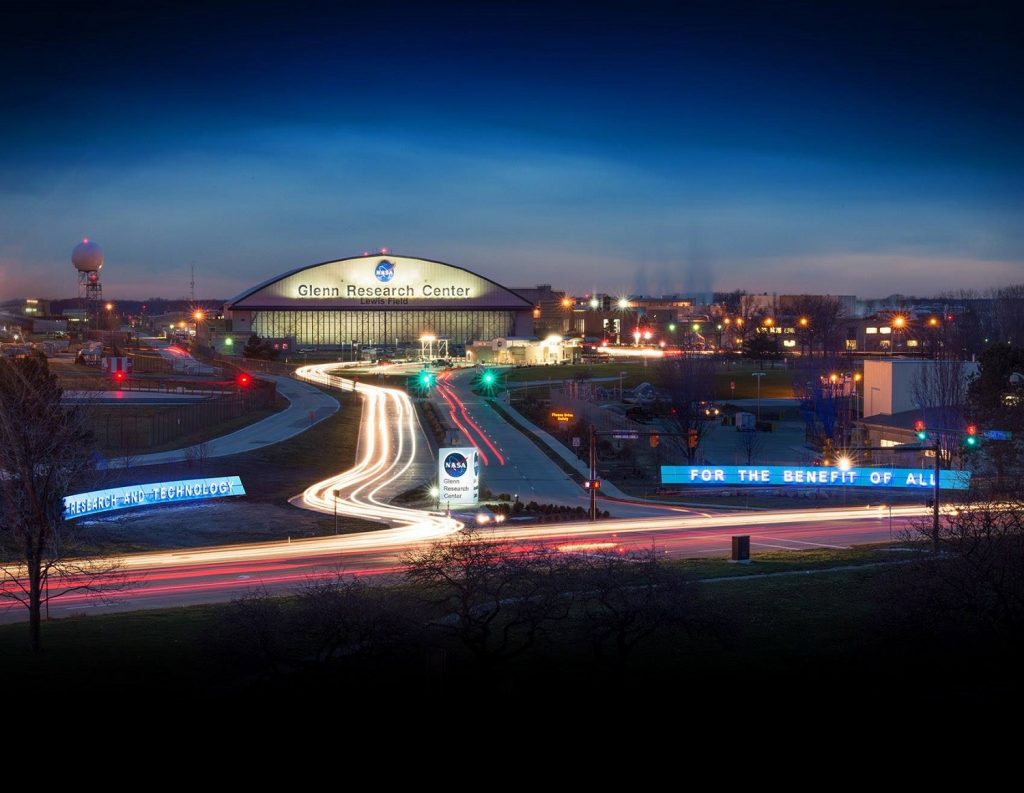Newmark: Q1 data was 2nd worst in 16 years
Greater Cleveland’s office market in the first quarter of this year saw its second-lowest amount of leasing activity, as measured in square feet, in the last 16 years since the Great Recession. Only the fourth quarter of 2021, following the pandemic and the rise of remote working, saw less leasing activity locally since 2009.
Those were some of the takeaways from the latest office market report by global real estate brokerage and data firms Newmark and CoStar Group. Both companies have offices in Downtown Cleveland — a place where people seem to be returning to the office albeit with already existing leases.
The report noted that office leasing in Greater Cleveland during January-March of 2025 tallied a paltry 240,121 square feet. The quietest quarter of leasing in the Cleveland metro area since 2009 was 196,850 square feet in October-December 2021, the report noted. Average quarterly leasing activity over those 16 years was 575,000 square feet.
But Newmark and CoStar said there are signs of market fundamentals that could support increased leasing activity soon in the region’s 40-million-square-foot office market where vacancy rates are slowly declining and rents increasing.
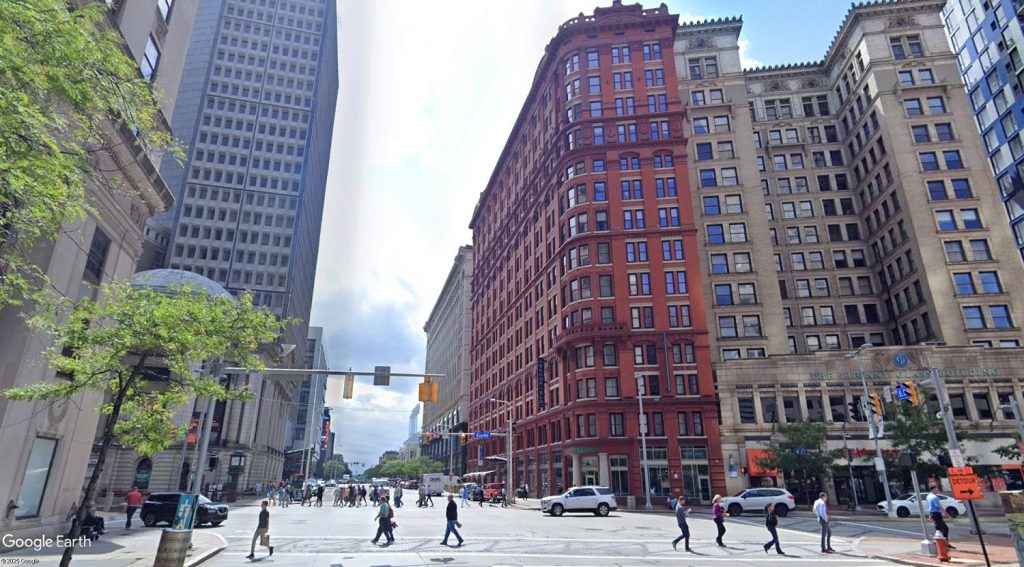
Midday pedestrian traffic downtown is on the rise — a good sign for restaurants, retailers and other businesses that support the office market. But the irony is that, in this view of East 9th Street and Euclid Avenue, nearly every building visible was or is being converted from an office building into residential, hotel and other uses (Google).
“Despite a lackluster 2024 and first quarter of 2025 in terms of leasing activity, companies continue to lean towards heavier and consistent return-to-office mandates, which could provide a boost to leasing going forward,” the report said.
“In fact, a trend that is emerging on the tenant side is the need for speed,” it continued. “Many (tenants) have begun making decisions in a shorter timeframe and moving quickly.”
There was a mix of bad and good affecting Downtown Cleveland’s central business district (CBD) — the largest office submarket in Greater Cleveland with nearly 17 million square feet of leasable space. That was especially true when it came to absorption — the rate at which properties are sold or leased in a given market over a specific period.
“Tenant interest has been heavier in the suburban submarkets and will remain there going forward, particularly in the South submarket,” the report continued. “Absorption should catch up in most of the suburban submarkets as tenants begin to sign deals and take occupancy as the year advances.”
For those who welcome employees returning to the office and re-energizing large office district’s like downtown, there was visual evidence of good news — but with a tone of caution.
“Parking garages and lots in the CBD have continued to look fuller as 2025 has progressed,” the report said. “However, economic uncertainty and continued difficulties with financing could prove to be stumbling blocks along the way.”
Downtown had the region’s highest average rent per square foot at $23.23, compared to $20.44 East, $19.89 South, $19.01 West and $16.12 Southwest. So far this year, office rents throughout Greater Cleveland have grown 2.9 percent — the third highest in 16 years.
Vacancies among all office classes downtown fell to 23.2 percent in the quarter, but were still the second-highest in the region behind the second-largest office submarket — the East.
Average office vacancy rate in the East’s 10.15-million-square-foot submarket was 25.7 percent. It declined because of the removal of a few obsolete properties from the trackable inventory.
Average office vacancies were 22.6 percent in the Southwest submarket, 20.4 percent South and 17.2 percent West — the lowest in the region, Newmark-CoStar reported.
END

